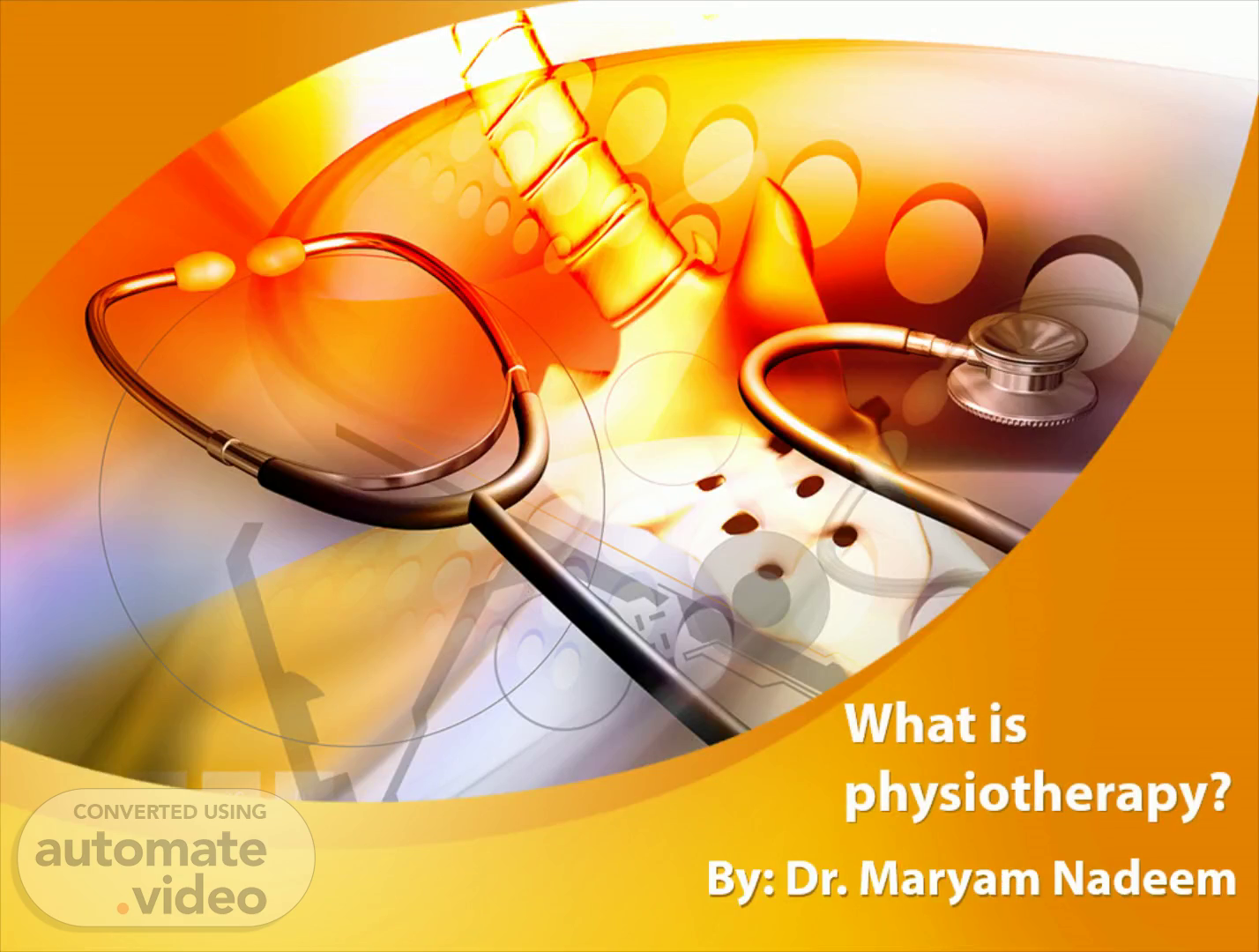
Page 1 (0s)
What is physiotherapy?. By: Dr. Maryam Nadeem.
Page 2 (7s)
What is Physiotherapy?. When someone is injured, sick, or disabled, physiotherapy can help to restore mobility and function. It can also assist to lower your risk of future injury or disease. It is the science of disease therapy by exercise, massage, heat, light, electricity, or other physical means. Drugs are not used in this type of treatment. It can be given from the newborn to the geriatric stages as needed. It involves evaluating, diagnosing, and treating a range of diseases, disorders, and disabilities using physical means..
Page 3 (33s)
Physiotherapy specialties. orthopedic Neurology Cardiopulmonary Pediatric Geriatric Sports Musculoskeletal rehabilitation.
Page 4 (55s)
What is the role of a physiotherapist?. A physiotherapist uses his knowledge and skills to help patients to regain movement and to improve a broad range of other physical problems associated with different ‘systems’ of the body. In particular, they treat the following conditions: Neurological (brain and nervous system such as movement problems) Musculoskeletal (soft tissues, joints, and bones, such as back pain, neck pain, shoulder pain, and sports injuries) Cardiovascular and Respiratory (heart and lungs and associated physiology) Physiotherapists analyze movement problems and give hands-on treatment and exercise prescriptions. Individual treatment plans to minimize physical impairments are also planned and implemented by physiotherapists as relieve physical pain & heal injuries to increase mobility, build strength, improve balance & enhance Cardiopulmonary performance..
Page 5 (1m 33s)
Here are some of the ways physiotherapy can help through therapeutic exercise, manual therapy, electrical modalities, and a range of techniques. Treat and manage neck and back pain and other joint injuries Assess, manage & treat a broad range of medical conditions from a sprained ankle to strokes. Address physical challenges associated with pain, arthritis, repetitive strain injury, (such as tennis elbow), etc. Treat sports injuries and provide advice on prevention and recurrence Provide post-surgical rehabilitation including joint replacement Maximize mobility with neurological disorders such as stroke, and spinal cord injury Treat children with pediatric conditions such as developmental delay, fractures, and cardiorespiratory conditions. Assist in the management of incontinence Provide pre-and post-natal care and other women’s health conditions Help manage the physical complications of cancer and its treatment Treat and manage respiratory and cardiac conditions and provide cardiac rehabilitation following a heart attack or cardiac surgery..
Page 6 (2m 49s)
Methods used in physiotherapy. electrotherapy Shortwave Diathermy Microwave Diathermy Ultra sound Interferential Current Therapy ( IFT) Transcutaneous Electrical Nerve Stimulation ( TENS). Faradic & galvanic muscle stimulator Cervical/ Lumbar Traction Wax bath Infrared rays LASER.
Page 7 (3m 37s)
Short-term and long-term goals of PT. Protect the involved area Reduce pain and inflammation Reduce intra or extracapsular effusion Increase range of joint movement Increase musculotendinous flexibility Increase muscle strength power and endurance Restore normal biomechanical functions Increase balance and proprioception.